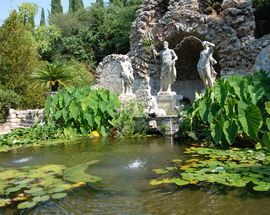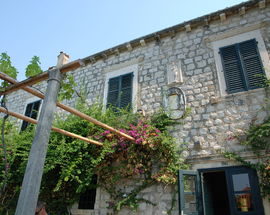Arboretum Trsteno
Trsteno was thus created by a man with a vision and aided by local sea captains who came home from their travels bearing gifts of exotic specimens. Over the centuries, many people have invested their energy and soul into these gardens. A sense of gratitude to nature and water permeates – don’t miss the baroque fountain at the foot of the stone aqueduct.
East of the villa lie a grape and olive press, once shared by the local community. A little path leads from the villa to the sea where a pavilion overlooking the water offers a view encapsulating the true meaning of this place – botanical splendour on the lush, island-strewn Adriatic. In this part of the garden, you can also see the oldest tree in the arboretum – a palm almost 500 years old looking remarkably healthy.
The arboretum includes the original 15th century garden laid out in renaissance style, with a geometric pattern of paths, a chapel, the fountain and aqueduct. There is also a newer garden (early 20th century) featuring formal and modern sections, with features typical of the southern Adriatic, plus a historic olive grove and natural woodland. Trsteno suffered quite badly both from shelling and from a forest fire which broke out in 2000, but Mother Nature has taken over and it’s clearly business as usual. A walk amid the beautiful, tall trees offers welcome dappled shade and the chance to enjoy the harmony of man and nature.
The village of Trsteno is a modest little settlement with a fine church, St Vitus, and two huge 500 year old Asiatic plane trees. By the waterside just east of the gardens is a remarkable but dilapidated fort, and a tiny harbour where a stream cascades down rocks into the sea. Magical.








Comments